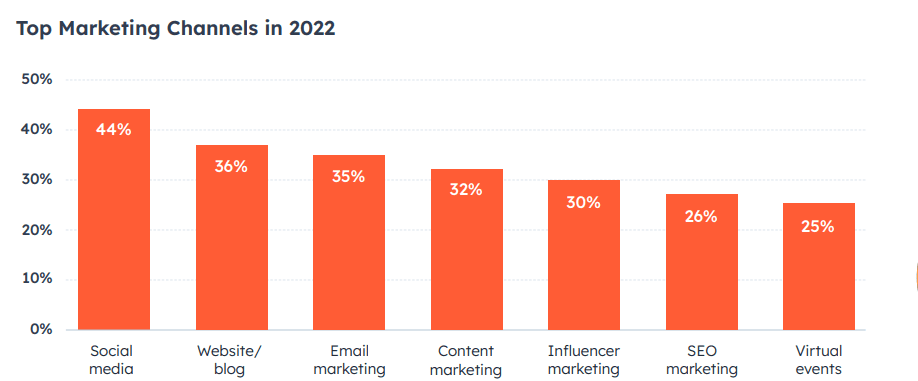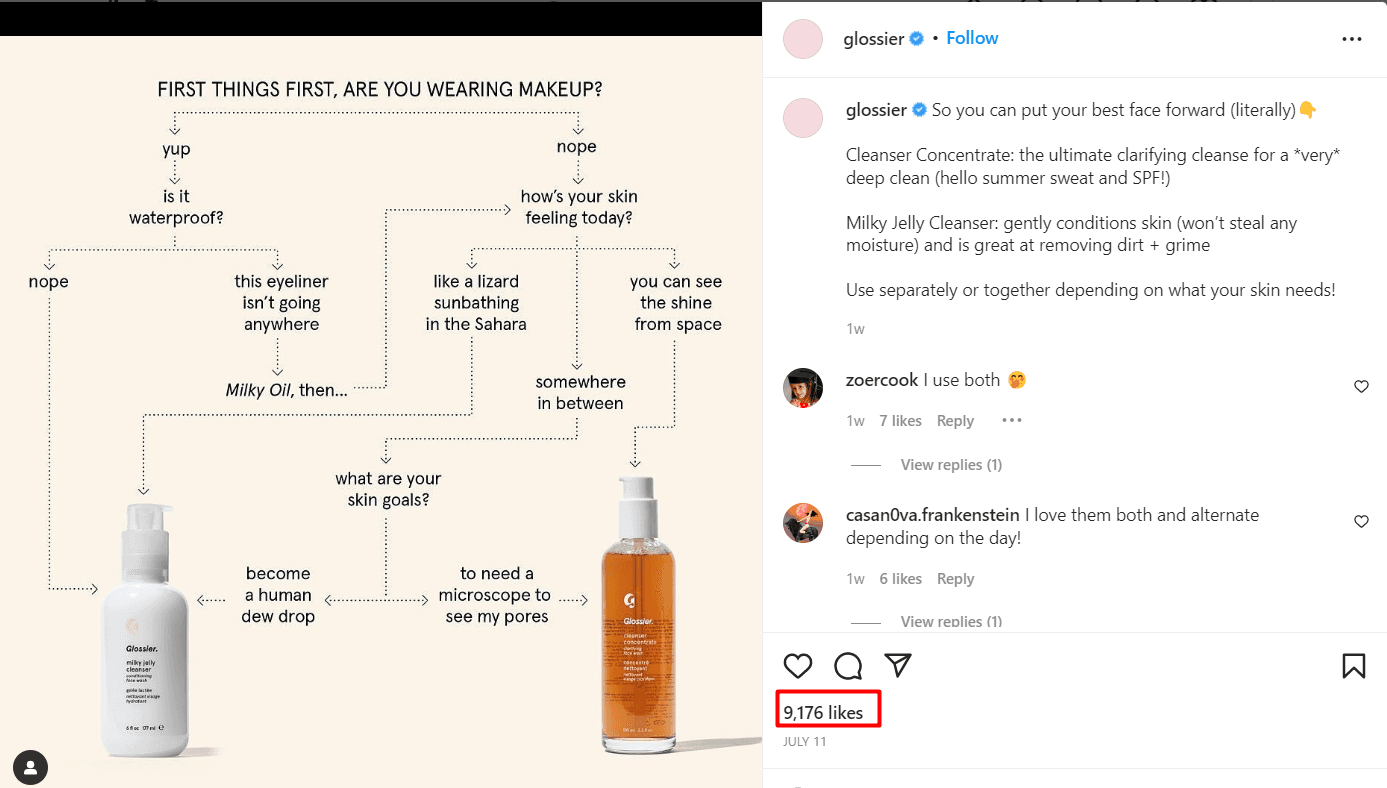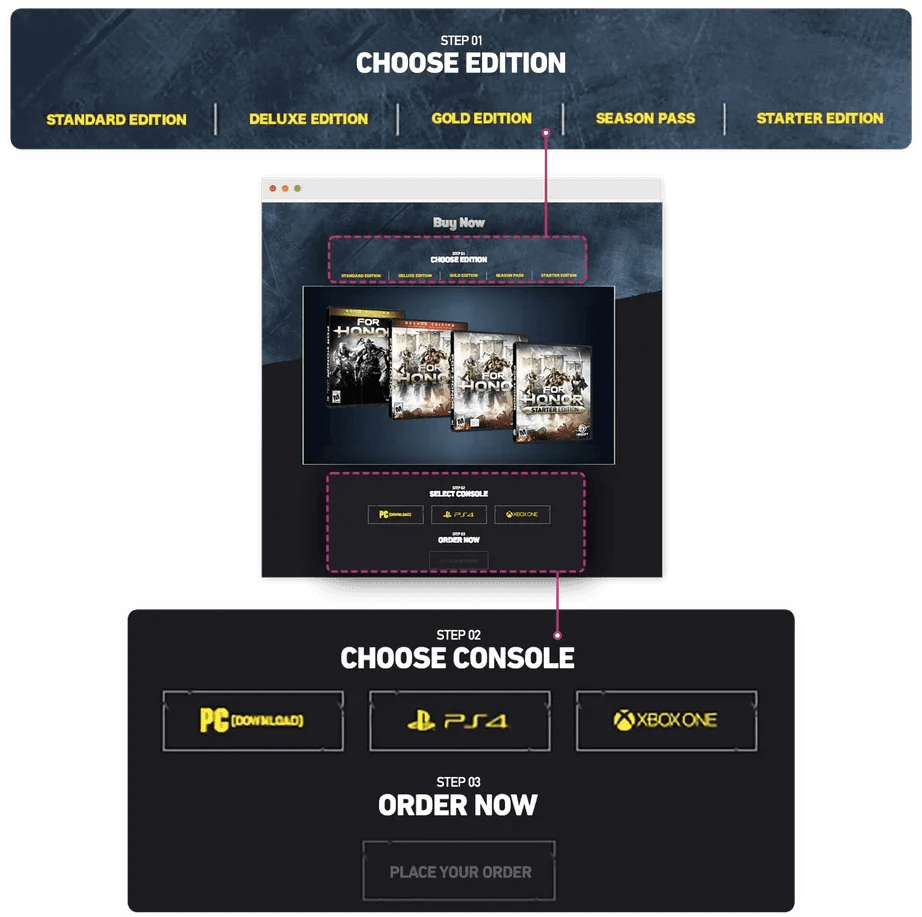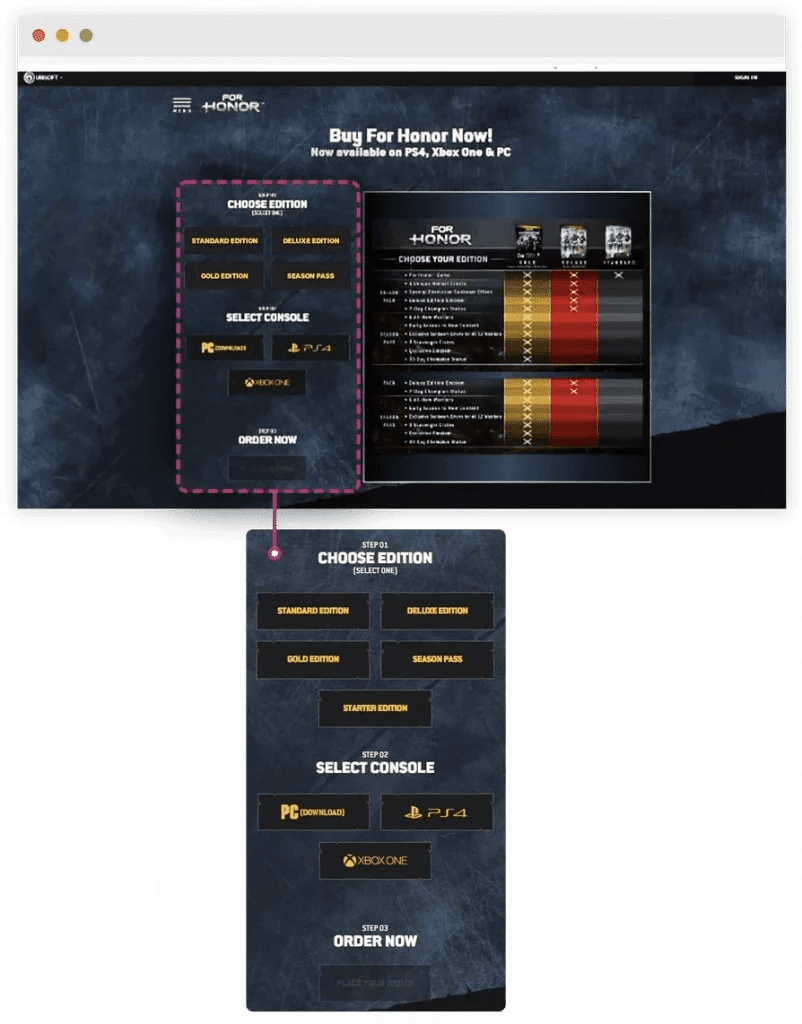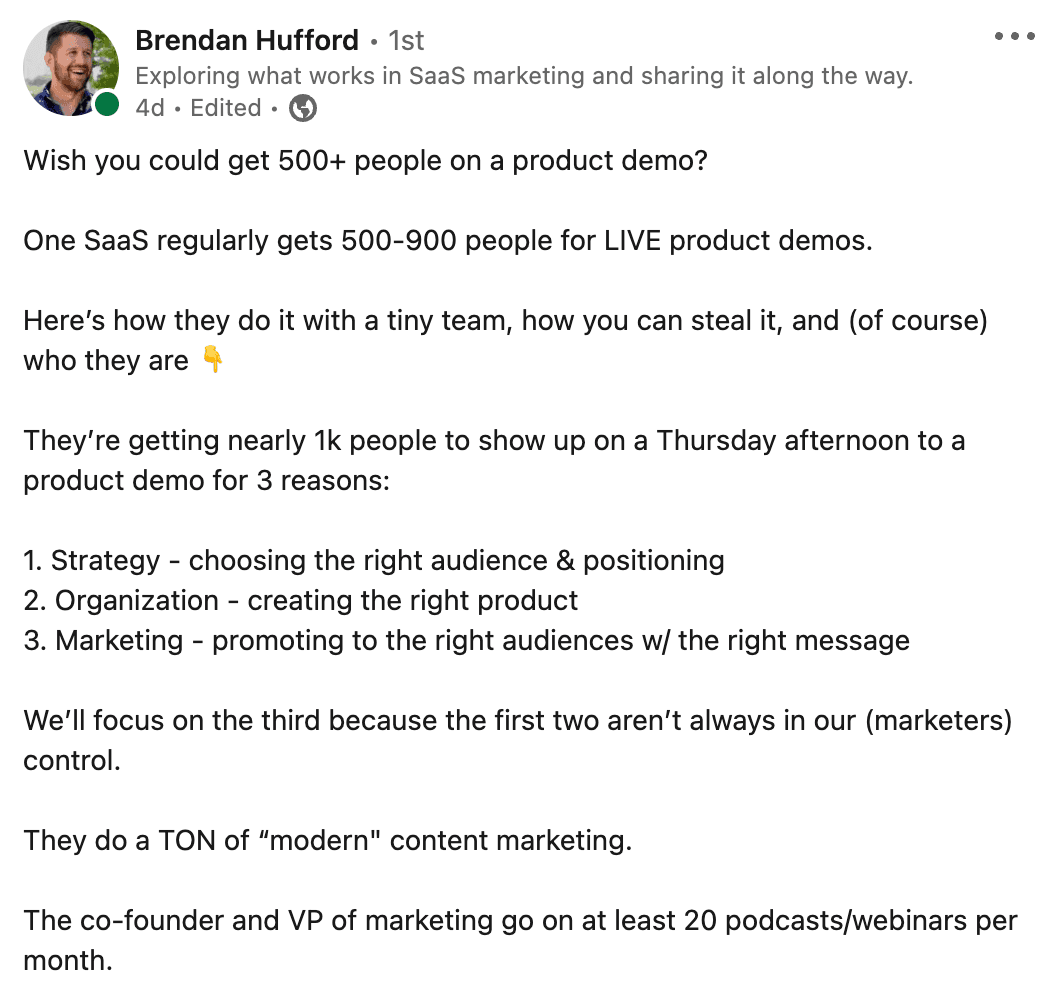Whether you run a small- or medium-sized enterprise, understanding the basics of marketing strategy is the first step toward customer attraction and revenue generation.
Think of your marketing strategy as the blueprint for achieving your company’s overarching goals and vision. Equipped with your strategy, you know the “what, when, and how” of growing your business.
However, because of the gazillion tactics that go into a marketing strategy, creating an effective one can be difficult and time-consuming. Well, not anymore.
In this guide, we’ll cover what you need to create a basic marketing strategy. Plus, we’ll share 15 ideas you should consider when creating your strategy.
What Is A Marketing Strategy?
A marketing strategy is a documented and overall plan that outlines how you’ll reach your audience and convert them into paying customers.
With the right marketing strategy, you’ll:
- Better understand the needs of your target audience
- Effectively allocate resources to fulfill your audience’s needs
- Create a sustainable competitive advantage
- Increase sales
Recommended Reading: Affiliate Marketing Examples
Basic Marketing Strategy Terms & Definitions
- Marketing Strategy: This is a plan for reaching your target audience, fulfilling their needs, and driving the sales of your products.
- Marketing Mix: This is a combination of elements such as product, price, place, and promotion techniques that your company uses to publicize and sell its goods and services.
- Business Marketing: Also known as business-to-business marketing, it’s a process that a company uses to market and sell its products to another business or organization.
- Digital Marketing: This refers to all marketing efforts a company delivers through digital channels such as social media, website, and email.
- Relationship Marketing: This involves all activities an organization undertakes to build long-term customer relationships, satisfaction, and brand loyalty.
- Competitive Advantage: This refers to attributes that put a company in a favorable position and allow it to outperform rivals.
Recommended Reading: 15 Basics of Marketing Strategy For Growing Your Brand
How To Create A Basic Marketing Strategy

1. Build Buyer Personas
A buyer persona (or marketing persona) is a research-based profile of who your ideal customers are, what they do, where they are, their habits, and their needs.
Here’s an example:
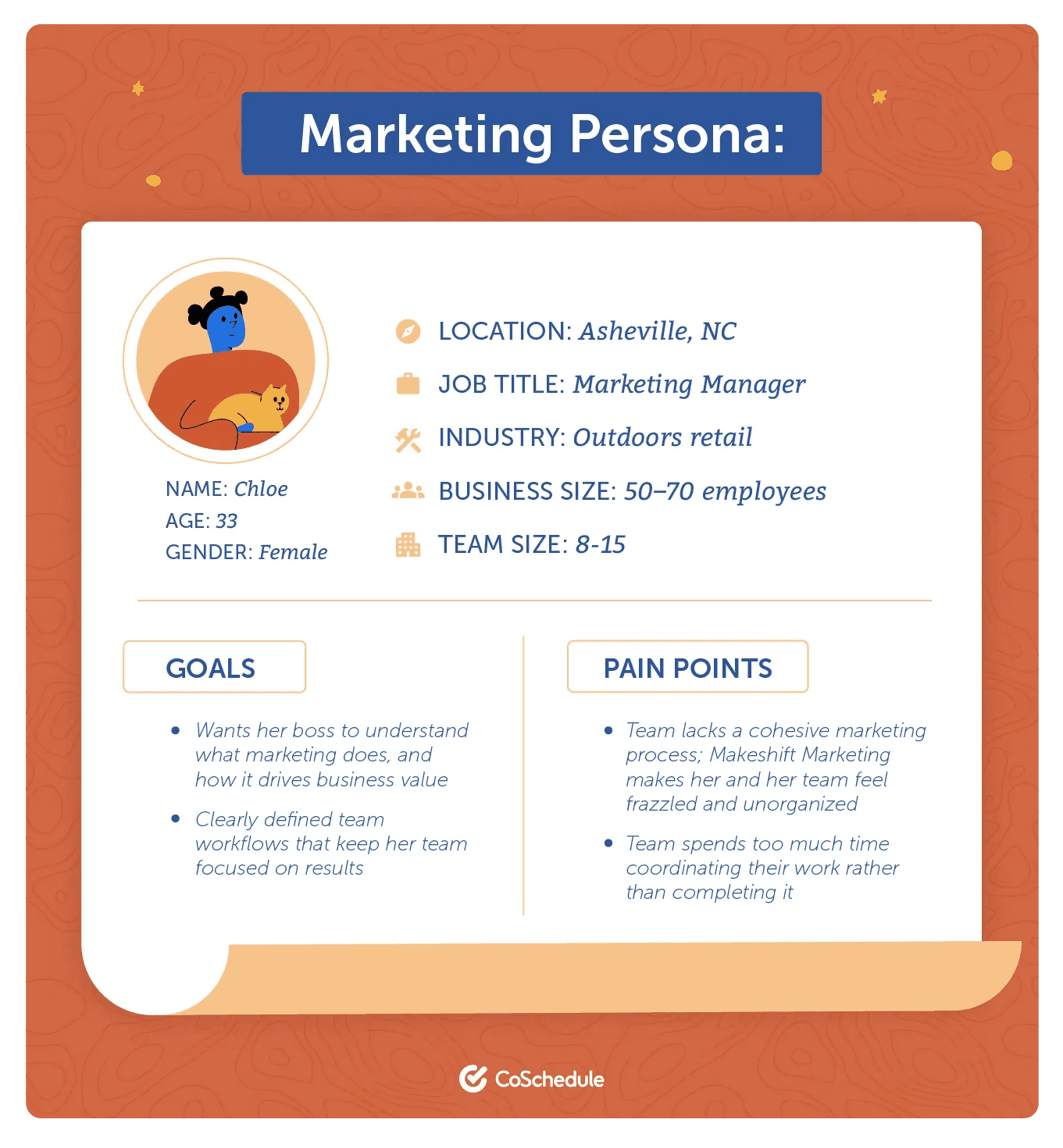
You can conduct buyer persona research by first outlining who you think your target audience is.
Afterward, refine your data and validate your thoughts by gathering information through customer surveys, customer interviews, customer reviews, and internal sources like Google Analytics, and then fill the information in your free buyer persona template.
2. Identify Your Goals & The Digital Marketing Tools You’ll Need
You can’t improve what you don’t track. This underscores the essence of creating goals.
When creating your , adopt the SMART acronym framework (specific, measurable, achievable, realistic, time-bound) and outline the digital marketing tools that’ll help you meet your goals.
Here’s an example of a SMART goal for a marketing team: Increase the landing page conversion rate of our PDF Analyzer from 10% to 15% by 31st December 2022.
3. Evaluate Your Existing Digital Channels & Assets
Digital marketing channels are online platforms like social media, organic search, email, and paid search, which allow you to reach your audience with your digital assets.
These assets are uniquely identifiable resources, like your social media profiles, company website, image, video, written content assets, and many more.
To decide on the best digital marketing channels and assets for your business, consider:
- Where your target audience spends their time
- How they consume content
- Your top competitor channels
- Your marketing goals
- Your marketing budget.
4. Create A Content Creation Plan
A content creation plan is a document that maps out the assets, schedule, deliverables, marketing channels, promotion, and other steps you need to achieve the goals of your content marketing strategy.
Our content planning template shows what goes into a basic plan.
5. Track Your Progress And Implement Results
Tracking the performance of your marketing strategy helps you identify what’s working and the gaps for improvement.
Depending on your goals, you can track KPIs like conversions, leads, revenue, and metrics for social media, SEO, email, and PPC.
After uncovering what works, double down on them, and refine your strategy to fix what’s not working.
When creating your strategy, you need to consider marketing basics like email marketing, social media marketing, etc.
These are the bare minimum that’ll make your business thrive, attract customers, and generate revenue. Here are 15 of them:
1. Launch A Website
Think of a website like your virtual store.
This is where prospective customers can find your content, physical address, products, results, and every information they need to understand what you offer.
With this information in one place, you can easily build an online presence, establish credibility, and eventually convert visitors into customers.
To get your website up and running, you’ll need the basics like a domain name, logo, hosting service, CMS platform, and quality website copy.
2. Create Your Blog
A recent HubSpot research showed that a blog is the second top marketing channel for brands in 2022, making it an important element of your marketing strategy.
While creating a blog page is a must, what’s even more important is writing and publishing quality posts. This is where the next two points take center stage.
3. Write Industry Articles
Once your blog is ready, publish articles about the latest trends, development, and strategies in your industry.
These contents will help you establish thought leadership, reach new customers, and attract shares & backlinks.
Here’s an example:
By doing an in-depth analysis of AWS’s product development approach, this post gets not only 139 shares but also 121 backlinks, according to SEMrush.

4. Optimize Your Content
According to BrightEdge, search engine optimization (SEO) contributes to 53% of all web traffic compared to organic social media channels (5%), paid channels (15%), and others (27%).
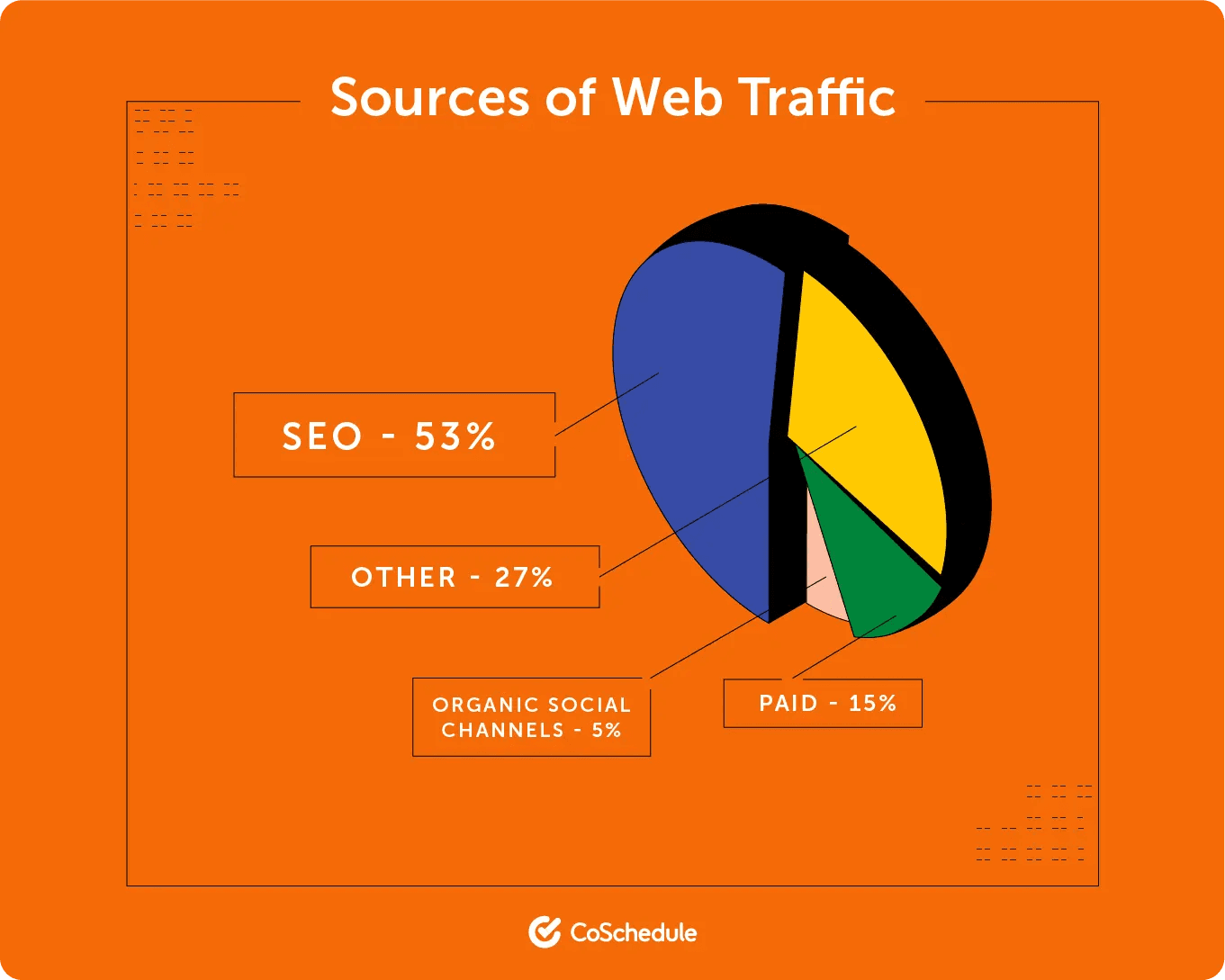
To optimize your content for SEO, here are some things to do:
- Perform keyword research
- Include the main keyword in your title tag, meta description, and URL
- Structure your blog post with header tags (H1, H2s, H3s, and so on)
- Add internal links with descriptive anchor texts
- Link to external authoritative sources
- Include visuals such as images, videos, and graphics
- Ensure your content is relevant and easy to read
Recommended Reading: How To Craft An Effective Keyword Strategy
5. Get On Social Media Platforms
Going on social networks is an excellent way to get your brand in front of potential consumers, drive sales, and build brand loyalty like Glossier did.
Depending on your brand, your social media strategy may differ based on the platform your target audience spends time on.
Check out our blog post on social media content strategy to learn how to grow your business on social media.
6. Advertise On Specific Platforms
Consider investing in paid ads in the marketing channels that your audience used the most.
This includes Google ads or social media advertising on Facebook, Instagram, TikTok, LinkedIn, Reddit, Quora, Pinterest, etc.
Here are resources to help you set up paid ads on popular social media platforms:
- Twitter Campaign Setup
- Facebook Ads Manager
- Instagram Ads Manager
- LinkedIn Campaign Manager
- TikTok Ads Setup
7. A/B Test Your Campaigns
A/B testing involves experimentation with two or more versions of your ad, landing page, etc.
You do A/B tests by showing a version of your ad or page element to different audience segments under the same conditions. The goal? Get the best version that drives the highest business results.
An example of an effective A/B test is Ubisoft’s 12% increase in lead generation. They did this by simplifying the buying process and reducing page scroll in a variation of their landing page.
So how do you run an A/B test?
- Pick a campaign to test, e.g., a landing page, newsletter, or social media copy
- Identify your goals, metrics, and statistical significance
- Choose a control (original version) and a challenger (the variation)
- Determine your sample size and A/B testing tools
- Test only one variable (e.g., a call to action (CTA), subject line, or color) for a single campaign
- Test your control copy and variation simultaneously
8. Create An Email Campaign
With the potential of generating $36 for every $1 spent, email marketing should play a core role in your marketing strategy.
Depending on your strategy, you can create email campaigns for onboarding, seasonal offers, post-purchase drips, cart abandonment, re-engagement, newsletters, and triggered sequences.
9. Offer A Limited-Time Offer
Limited-time offers allow you to create a sense of urgency and give “on-the-fence customers” a compelling reason to buy.
To create effective limited-time offers, define your offer dates, add a benefit-driven CTA, and provide a clear and relevant offer that appeals to your customer. For example, you could send a timed discounted or free shipping offer to customers who have added items to a cart but haven’t checked out.
10. Join Local Business Networks
Building strategic relationships and partnerships are critical to growing your business, and that’s an opportunity that local business networks offer.
You can tap into these networks to learn from their experiences, receive mentoring, and get referrals to grow your company.
Some local networking organizations you can join include:
- Your local chamber of commerce
- Business Networking International
- Local development or trade associations
- Your community’s rotary club
11. Run Contests
Contests work by incentivizing participants to perform an action.
Whether your goal is to drive brand awareness, ramp up buzz for a new product launch, or drive sales, what matters is that the outcome aligns with your marketing goals.
Here’s a brilliant example of a contest by MetroByTMobile:
Some days call for a little extra ✨
Today calls for some extra, extra. Like 22 of you winning $2,222 each ????????Reply and tag @metrobytmobile and use #TMobile2sday + #contest for a chance to win.
Rules: https://t.co/0nDLGkjbZb pic.twitter.com/eBQFCW4Xlf
— Metro by T-Mobile (@MetroByTMobile) February 22, 2022
Some contest ideas you can try are hashtag challenges, sign-up deals, user-generated photo submissions, and follow to win or tag a friend contest.
12. Do A Podcast
Data from eMarketer suggests that global podcast listenership will grow from 424.2 million in 2022 to 504.9 million in 2024.
The growth in the popularity of podcasts means your audience will increasingly use this channel to gain information.
Information aside, incorporating podcasts in your marketing strategy will help you:
- Reach customers who prefer audio content
- Build relationships with leaders in your industry
- Increase your brand’s visibility.
Companies like Gong have successfully included podcasts in their content marketing strategy.
The result? Audience growth to over 100,000 listeners in 2 years.
13. Organize Webinars

Conducting regular webinars allows you to build brand credibility and create a loyal community of raving fans.
This is one marketing strategy that SparkToro uses to attract up to 1000 people for each of its webinar sessions.
Where possible, invite industry experts as speakers like SparkToro does. This enables you to tap into their extensive network and grow your audience.
Some webinar ideas to try are:
- Analysis and brainstorming webinars
- Virtual networking conferences
- Panel discussions
- Fireside chats
14. Use Calls-To-Actions (CTA)
Adding CTAs to your marketing materials helps you prompt a reader to take a specific action.
CTAs include words like “expires soon, sign up today, download the free report,” and more.
When thinking about CTAs, ensure you’re tapping into psychological triggers of exclusivity, fear, hope, etc.
Our in-depth blog post on how to write a call to action walks you through the intricacies of CTAs that drive massive business results.
15. Offer Free Educational Resources
Giving away your resources for free may seem counterintuitive, but in the long run, it provides your audience with proof of what you can do before they eventually trust you enough to buy your product.
If these resources pack a ton of value, you can also use them for lead generation.
An example is our marketing resource hub.
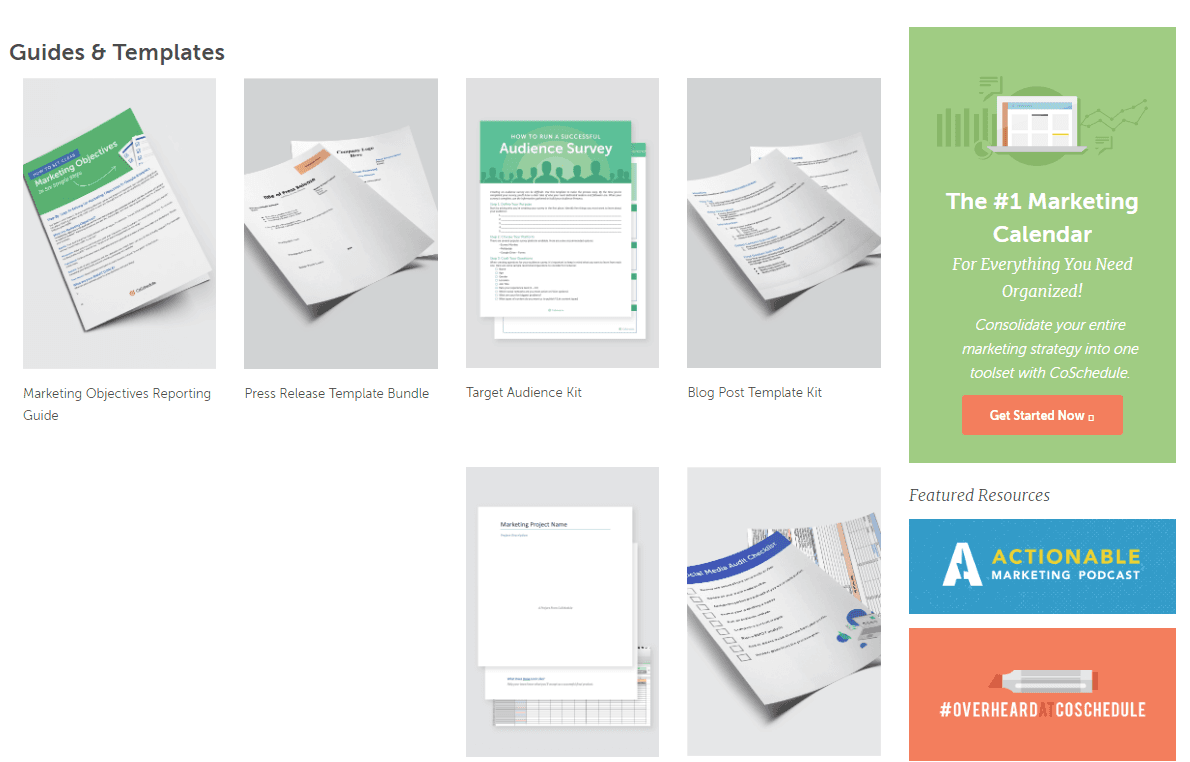
Some free educational resources you can create are:
- Downloadable blog posts and guides
- Templates and checklists
- Original research
- Whitepapers
- Free tools
- Ebooks
What Are The Four Basic Marketing Strategies?
The four elements (4 Ps) of a basic marketing strategy cover the product, price, place, and promotion that a company uses to reach potential customers and drive sales.
Also known as the “marketing mix,” this strategy has helped popular brands like Airbnb to unlock amazing results because of the holistic tactics they put in place.
When creating your marketing strategy, you can go beyond the 4 Ps to the 7 Ps as this could help you drive excellent business outcomes.
Recommended Reading: How To Craft An Effective Communications Plan In 10 Quick Steps
What’s The Difference Between Marketing Strategy And A Marketing Plan?
A marketing strategy refers to a company’s overall approach to achieving its marketing-specific goals, while a marketing plan outlines activities (the “how”) that’ll help a company execute the strategy.

